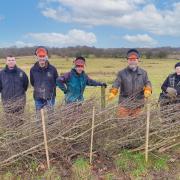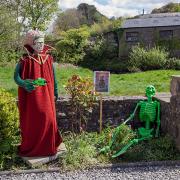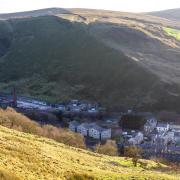It is hard to believe as you drive from Clitheroe to the nearby Salthill Quarry that this area was covered by salty water, after all it is quite high up in the East Lancashire hills.
Long before the Atlantic Ocean was named, the area was covered by the Panthalassic Ocean, which surrounded a great land mass of all the present continents and Salthill Quarry was at the bottom of this huge ocean.

Scattered around a large area of the nature reserve are fossilised remains of crinoids, 340million-year-old sea lillies. These creatures, still around today, are attached to the sea bottom by a stalk in their early stages, before they move around the ocean bottom in warmer places, looking for food. They are part of the same family as starfish and sea urchins.
Many of the stalks can be seen on the floor at Salthill Quarry, they look like Polo mint-shaped rocks. Their existence and the nearby important mudmounds led to the nature reserve being designated a Site of Special Scientific Interest for its geology.
Recently, Mellor St Mary’s CofE Primary School paid a visit and found not only the stalks but some of the crinoid heads. They returned to school to create a geology project after their day out.
The uncovering of more fossils came about with controlled clearing of cliff faces by experts and glacial scratches funded by Countryside Stewardship.

The floral creatures give Salthill Quarry a real natural history but the reserve is also renowned for the flowers that grow in its astounding flower meadows.
Reserve officer Kim Coverdale said: ‘You need to look out for fragrant orchids and bee orchids in July, carline thistle and autumn gentian in August, and look out for the displays of bird’s-foot trefoil in late summer too.
‘These flowers are allowed to come through after cutting and raking of the species-rich grasslands, by volunteers over winter.’
Those grasslands and flower meadows are a wonderful sight with a backdrop of the magnificent Pendle Hill.
The woodland areas, dominated by ash and hawthorn, also have dog rose, field rose and sweet briar grow along the edge.

Wildflowers attract insects like azure common blue butterfly which can be found on hot summer days. I have spent many hours trying to get pictures of the fluttering orange tip butterfly but I find the distinctive six-spot burnet moth are much lazier and easier to capture on camera.
A few years ago, I heard a field grasshopper and then found the little fellow sheltering in the grasses. I also discovered a red-tailed bee nest, and managed to get some lovely pictures.
Early morning is a good time to visit Salthill Quarry as birds like blue tits, great tits, goldfinches and bullfinches welcome the day with song. They are joined in summer by migrants like blackcap, willow warbler, garden warbler and chiffchaff.




























